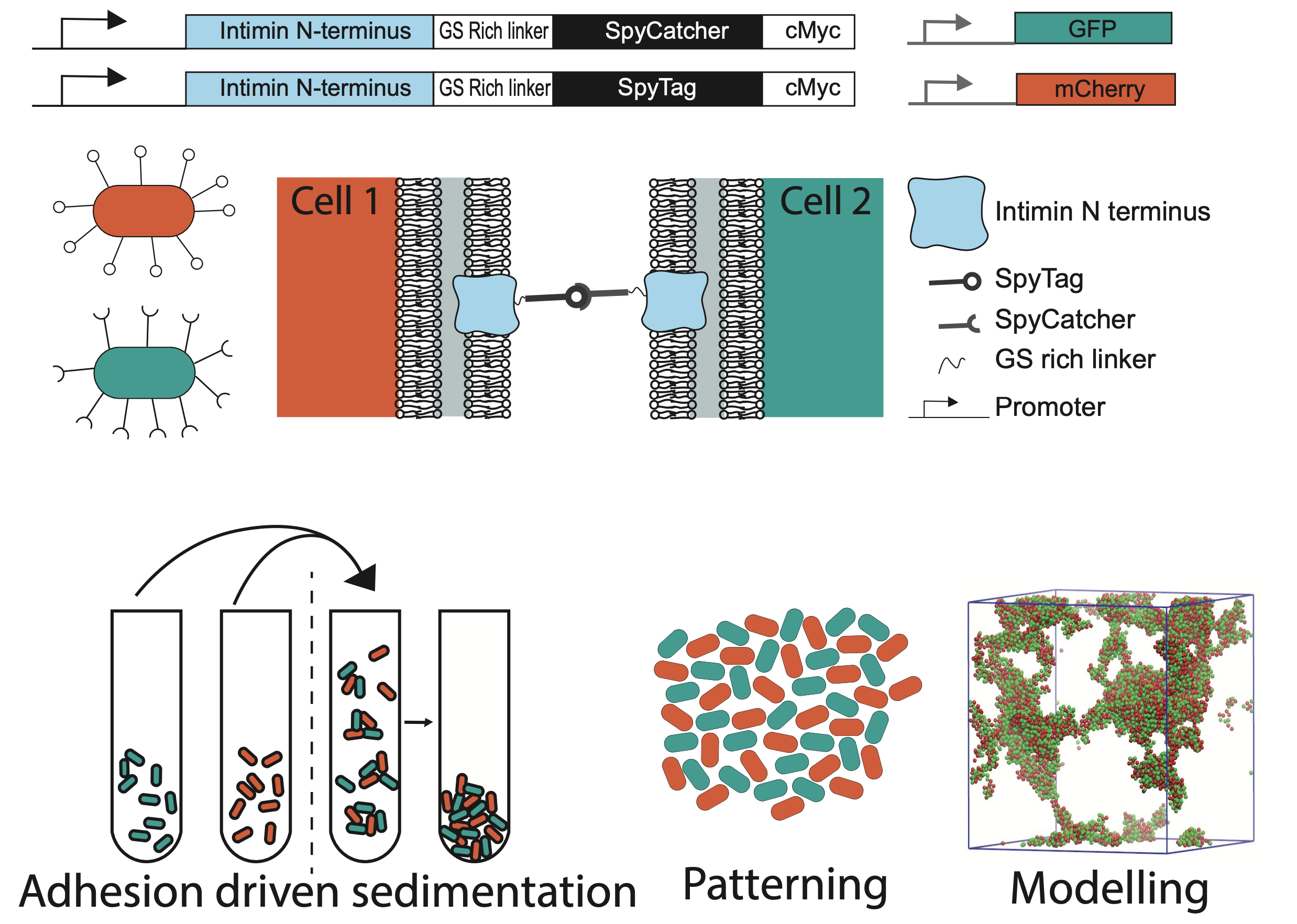Bacterial metabolism and wastewater treatment emissions
There is increasing concern about nitrous oxide emissions from wastewater treatment plants as a result of nitrification and denitrification processes. Nitrous oxide is a potent greenhouses gas that can also damage the ozone layer. In collaboration with Veolia, we are investigating the denitrification pathway in a model wastewater treatment organism, Comamonas denitrificans in order to understand the dynamics of nitrous oxide emissions. Team: Prof. Cait MacPhee, Dr Efthalia Chatzisymeon, and Anne-Maelle Penot.
Engineering designer bacterial communities
We are engineering bacterial cells to display Cell Linking Adhesive Surface Proteins (CLASPs) on their surface in order to tune cell assembly for patterning and separation in biotechnological processes. Team: Prof. Lynne Regan, Prof. Cait MacPhee, and Dr. Mai-Britt Jensen, and Hannah Johns.

Collective behaviour of seagrass protists
The seagrass colonising protist Labyrinthula zoosterae exhibits remarkable collective behaviour. During colony growth, the cells secrete an ectoplasmic net that they use to expand the colony and to travel within it. We are using network theory to characterise the topology of the resulting microbial railway system. Team: Prof. Wilson Poon, Dr. Dave Fairhurst, and Joe Knight.

Rheology of filamentous suspensions
In wastewater treatment filamentous bacteria cells play a crucial role in the mechanical properties of the activated sludge flocs. In order to understand the physics of filamentous suspensions more generally, we are using computer simulations to probe the rheological behaviour of dense suspensions of filaments with different morphologies. Team: Prof. Cait MacPhee, Dr. Chris Ness, and Holly Bridge.

Network formation in filamentous wastewater treatment bacteria
We are using biophysical experiments, complimented with Langevin dynamics simulations to understand network formation in suspensions of the wastewater treatment bacteria Comamonas denitrificans. This bacteria has a propensity to filament, the length of which has a significant effect on the structural and dynamical properties of the network. Team: Prof. Davide Marenduzzo, Prof. Cait MacPhee, Dr. Eleonora Secchi (ETH Zurich), and Dr. Sam Charlton (ETH Zurich).

The biophysical mechanisms of bacterial biofilm and aggregate formation
Using the pathogenic bacteria and model biofilm former Pseudomonas aeruginosa, we have been probing the biophysical mechanisms of cell-cell cohesion in suspended biofilm aggregates. Using agent-based computer simulations, we have also shed valuable insight into the role of the active layer dynamics in biofilm formation. Team: Prof. Rosalind Allen (Jena) and Dr. Ellen Young.

